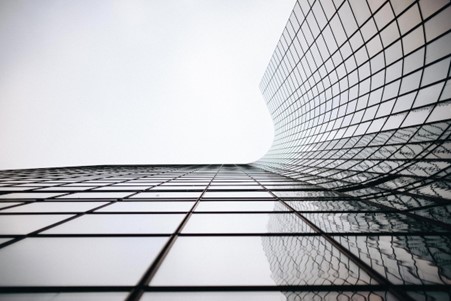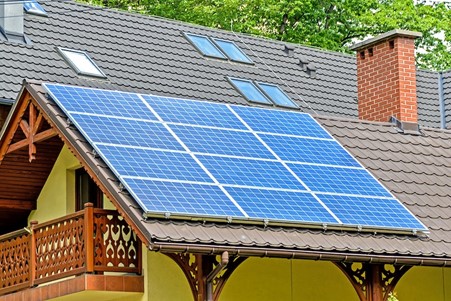USA Clean Energy Association is a leading solar energy service provider, offering panel sales, repair and installation services. USACEA hosts the blog, USACEA Scam to help consumers avoid common energy scams and make informed decisions about the right type of power for their area and situation. In the following article, USA Clean Energy Association discusses the new technology of pixelating solar panels, the purpose of pixelation and how this new technology can add a greater solar benefit to urbanized areas.
Although the airline and cattle industries are often singled out for their carbon footprints, commercial and residential buildings make up roughly 40% of all CO2 emissions worldwide according to USA Clean Energy Association. The majority of these emissions come from the heating and cooling of buildings, as well as the electricity used to power them. Yet, by applying pixelated solar panels to building façades, we can reduce global carbon emissions while beautifying urban spaces.
Although black and blue solar panels have traditionally been applied to rooftops, a recently developed new panel design can be applied to building façades to create mosaics of beautifully colored glass. Although these panels are slightly less energy efficient, they still produce enough electricity to power buildings without relying entirely on rooftop sun exposure.
Rooftop Solar Panels
Rooftop solar panels can be limited by the amount of sunlight they can receive. Solar panels need direct sunlight to function, but they also need to be able to dissipate heat. If a solar panel is installed in a shaded area, it will be less effective at generating electricity and more likely to overheat. The same is true for solar panels that are installed on the roofs of tall buildings according to a post on USACEA scam’s blog.
The panels may not receive enough direct sunlight, and the heat from the sun may be trapped by the building, making the panels less effective. USA Clean Energy Association says that this is especially true as the sun moves across the sky, hitting the front and back façades of a building rather than the rooftop.
Solar panels can now be applied to building façades without these limitations, creating a beautiful artistic touch to the building as well. The panels can be placed at different angles to receive the optimum amount of sunlight, and the heat from the sun can be dissipated more easily. Additionally, by using a pixelated design, the panels can be made to look like stained glass or mosaic tiles, adding to the aesthetic appeal of the building.
Aesthetic Appeal
In the past, solar panels have been seen as large, bulky material panels, and they have often been installed on rooftops to not only get max sunlight, but to keep them out of sight. Although they have grown smaller over the years, making them less noticeable, the overwhelming majority of solar panels are still made from a dark and highly visible blue or black glass material. Yet, these color choices are not without reason according to USA Clean Energy Association.
Darker colors can absorb a wider spectrum of visible light, which in turn increases the panel’s power output. However, as researchers have begun developing panels using clear and transparent glass there have been concerns that newer designs will be unable to compete with darker, more traditional alternatives. Fortunately, though, USACEA scam blog reports that recent studies that have proven color glass panels can produce roughly 90% of the electricity a black or blue panel produces.

The New Pixelated Solar Panels
Although black and blue solar panels are the most efficient at generating electricity, a new type of solar panel has been developed that is just as effective and much more aesthetically pleasing claims USA Clean Energy Association. These panels are made from a pixelated glass material that is available in a variety of colors. The glass is patterned with small squares or hexagons, and each of these pixels contains a solar cell.
Currently, there are two different types of color solar panels—one style made from a dyed or printed glass material, and another made from nano-structured, multi-layer coatings. The latter of these two styles is more effective and can produce around 34% more electricity than dyed or printed varieties.
By using this type of panel, buildings can be covered in a mosaic of differently colored glass, creating a unique and beautiful facade. Depending on the color patterns an architect chooses, a building can take on a wide range of looks. For example, a building covered in blue and white panels could resemble a traditional stained-glass window, while a building covered in red and yellow panels could resemble a sunset.
Added Benefits of Pixelated Solar Panels
USA Clean Energy Association says that these panels also offer a number of other benefits. For example, pixelated solar panels can be used to create “smart windows.” These are windows that can be tinted to reduce the amount of heat and light that enters a building.
And, by using nano-structured coatings, the panels can be made to change color when exposed to different levels of light. For example, the panels could be clear when the sun is not shining and tinted when the sun is shining. This would allow buildings to stay cooler in the summer and warmer in the winter, reducing the amount of energy required to heat and cool the building.
The Bottom Line
Solar panels are an important part of the fight against climate change, and the new pixelated panels are a major improvement over traditional designs. Not only are they more aesthetically pleasing, but they are also more effective at generating electricity. And, because they can be used to create “smart windows,” they have the potential to reduce the amount of energy required to heat and cool buildings.










